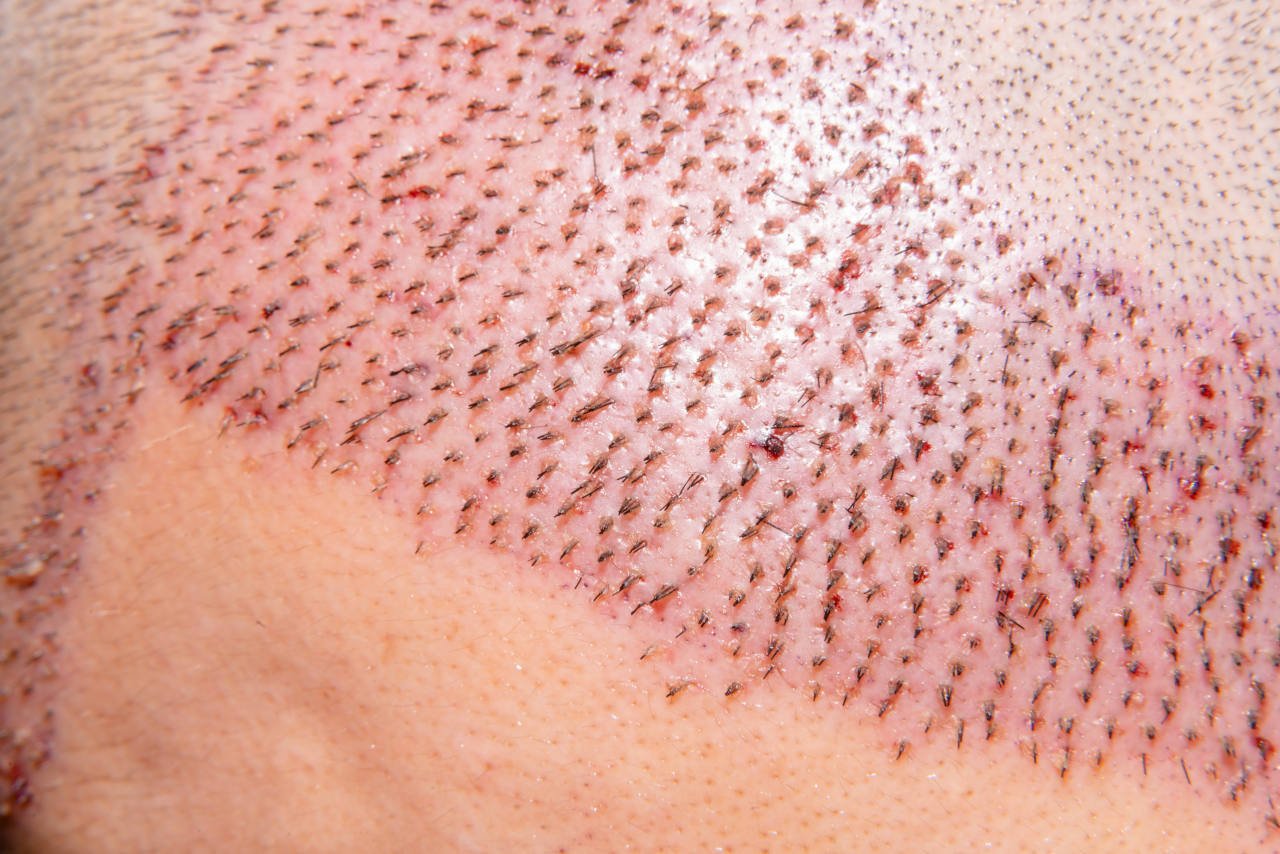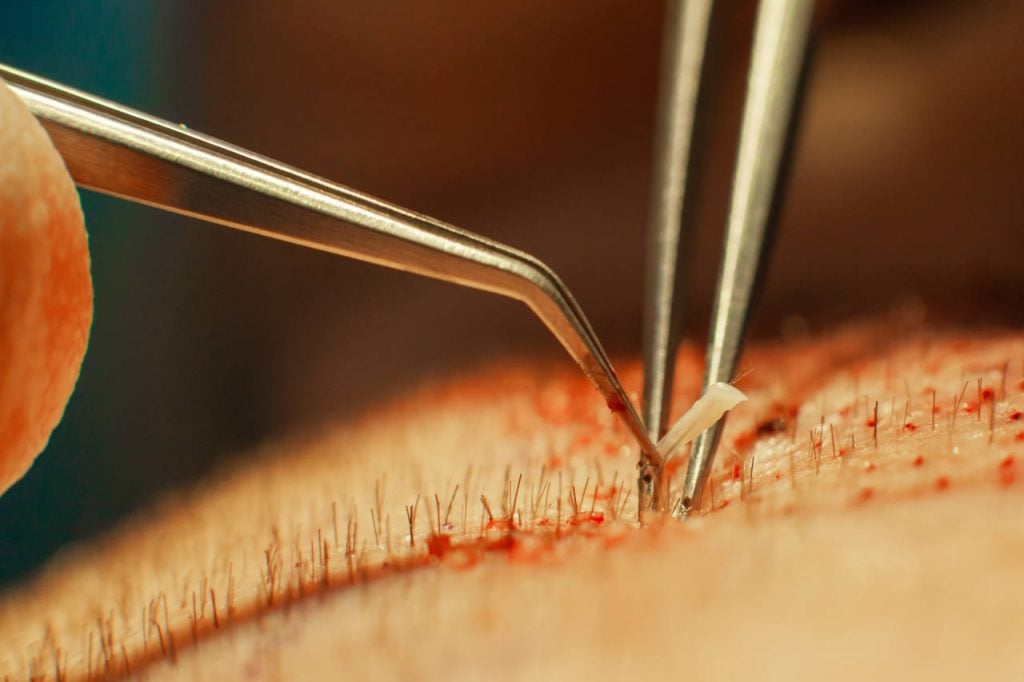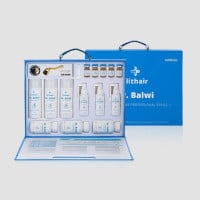
How to Correctly Manage Your Hair Transplant Aftercare?
Following a hair surgery there are several stages to the hair transplant aftercare process. It’s important to follow all the medical advice provided to you by the specialists in order to ensure the best results.
The experts at the clinic will inform you about everything you need to know for a smooth aftercare experience following the transplant. However, it’s a good idea to be aware beforehand of the phases of recovery, what to expect and what to avoid.
Summary
- 1-7 Days After Hair Transplant
- 1-2 Weeks After Hair Transplant
- 1-6 Months After Hair Transplant
- 12-18 Months After Hair Transplant
- Hair Transplant Aftercare With Elithair
- What To Avoid After a Hair Transplant?
1-7 Days After Hair Transplant

Immediately after
A light bandage will be placed on your donor area where the grafts have been harvested from the FUE hair transplant and your recipient area will be left exposed to allow the grafts to settle.
Nothing should touch this area for at least three hours after surgery. Stay indoors to avoid sun exposure and excess sweating which can disrupt the newly transplanted follicles. In the first three hours your recipient area is particularly sensitive as the newly transplanted grafts are dry and loosely attached to the channels.
When indoors keep the area uncovered, and if you do need to go outside wear a loose fitting hat to protect your hair from the sun.
As soon as the day after the procedure you’ll be able to return to normal activities such as returning to work, or travel if you wish. Any pain or discomfort should be manageable with over the counter painkillers.
Sleep
You’ll be able to go to sleep about three hours after the procedure. It’s important to rest in an upright position, on your back and keep your head elevated in order to ensure that the transplant area is not disturbed.
If there is no pressure around the forehead area which can be a side effect from the procedure then you should be able to sleep as normal. It may be easier to sleep on a recliner for this initial period.
Hair washing
Elithair provides a free recovery kit with hair transplant aftercare products to enable an ideal recovery, so you can enjoy the long term results of your transplant.
Do not wash your hair using a shampoo straight after the hair transplant (unless applied by your specialist) until around the 4th day following the procedure.
- Start by gently touching the transplanted area, applying a lotion and letting it sit for 10 minutes.
- Then apply specialist shampoo over it. You should use low pressure, lukewarm water.
- Let the affected area air dry as heat styling tools like hair dryers should be avoided.
1-2 Weeks After Hair Transplant
Maintain sleeping on your back with your head elevated for about seven to 10 days after the transplant to prevent any risk of swelling although recovery times can vary.
The visible red marks at the recipient and donor areas will only be visible for between seven to 10 days. The colour should fade after this although it may persist which can depend on your hair colour or complexion.
Exercise can commence again about five days after the transplant but post operational activities should be limited to light workouts which don’t cause excess sweating or elevation of heart rate and blood pressure.
Continue to wash your hair once or twice a day as part of your hair restoration aftercare until the scabs have come loose. This may take up to two weeks to occur. After the third week you can resume your normal hair care routine. If there are any scabs left after this time they need to fall off naturally so don’t try to remove them yourself.
1-6 Months After Hair Transplant
While some hair loss may occur in the first 2-4 weeks as part of the hair transplant aftercare, the hair will start to regrow in the third month and there should be new, healthy hair growth at the six month mark.
You’ll be able to get a haircut after three months using scissors but razors cannot be used until after 6 months. When trying to style your hair you should comb gently so as not to disturb the roots. The use of dyes are discouraged until the area has been completely healed as the chemicals can be toxic to the vulnerable hair follicles.
12-18 Months After Hair Transplant
After 12-18 months you can start to fully enjoy the final result. At this point the healing process should have completed and hair will be thickening and growing well.
Take a look at our past successful results to see why we have such a high satisfaction rate from our patients, with positive reviews and testimonials.
Hair Transplant Aftercare With Elithair
Elithair offers a specially designed hair care product range in our online shop which can be easily incorporated into your hair routine. We’re on hand throughout the recovery process and can be contacted quickly for any queries you might have about how to take care of your hair.
As part of the hair transplant surgery, we offer a free PRP treatment. With this we are able to enrich the recipient area with platelet rich blood from your body in order to promote regrowth of the hair grafts. We will be in contact to arrange this if it is something we feel is necessary.
What To Avoid After a Hair Transplant?
- Avoid sun exposure, especially immediately after surgery and between 10am and 2pm. Continue to keep out of direct sunlight for at least the first two weeks after the operation and when outside, head-wear is recommended for the first six months to protect the recipient area from potential sunburn.
- Avoid strenuous exercise until five days after the procedure, and always shower soon after any workouts to minimise the risk of infection.
- Avoid the use of saunas or steam rooms and try to keep your scalp free of sweat during the healing process.
- Avoid hair styling products such as harsh gels or waxes made using strong chemicals that could damage your new hair follicles.
- Avoid itching or scratching the wounds and scabs. If there is any irritation you can relieve itching or discomfort with a hair serum.
From beginning to end, the aftercare process usually takes 9-12 months depending on the patient. Remember, recovery after hair transplant surgery can differ from patient to patient, with healing taking longer in some cases. If you have any concerns at all during your recovery, don’t hesitate to get in contact.
Or if you have further questions about post-operative care, we’re more than happy to help. Start your hair restoration journey today with a free consultation.
FAQ
How long should I avoid swimming after a hair transplant?
It is recommended to avoid swimming for at least four weeks after a hair transplant to prevent infections and protect the healing grafts.
Can I use hair styling products after my hair transplant?
Avoid using hair styling products for at least two weeks post-procedure. Once the scalp has healed, you can gradually reintroduce gentle, non-irritating products.
What should I do if I experience severe itching after the transplant?
If severe itching occurs, contact your hair loss clinic for advice. Over-the-counter antihistamines or prescribed medications may be recommended to alleviate the discomfort. At Elithair, our patients can contact us either through our phone number or by using our application.
Is it normal to experience hair shedding after a transplant?
Yes, it is normal to experience shedding within the first few weeks as the transplanted hair enters a resting phase. New hair growth typically starts around the third month.
When can I resume dyeing my hair?
Hair dyeing should be avoided for at least six months post-transplant to ensure the scalp and hair follicles are fully healed and to prevent irritation.


